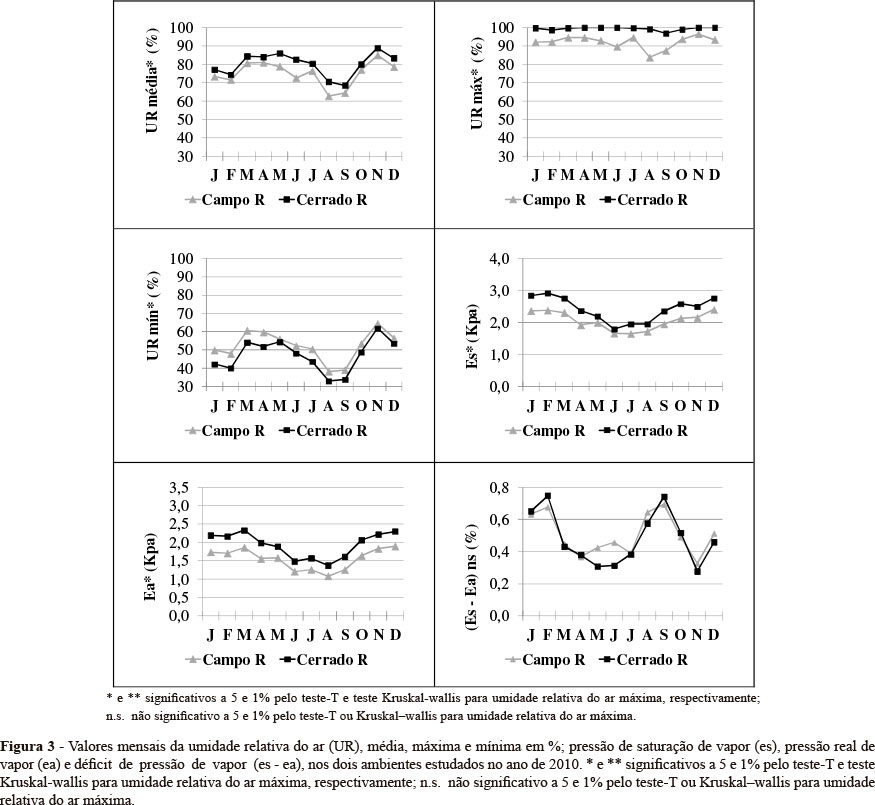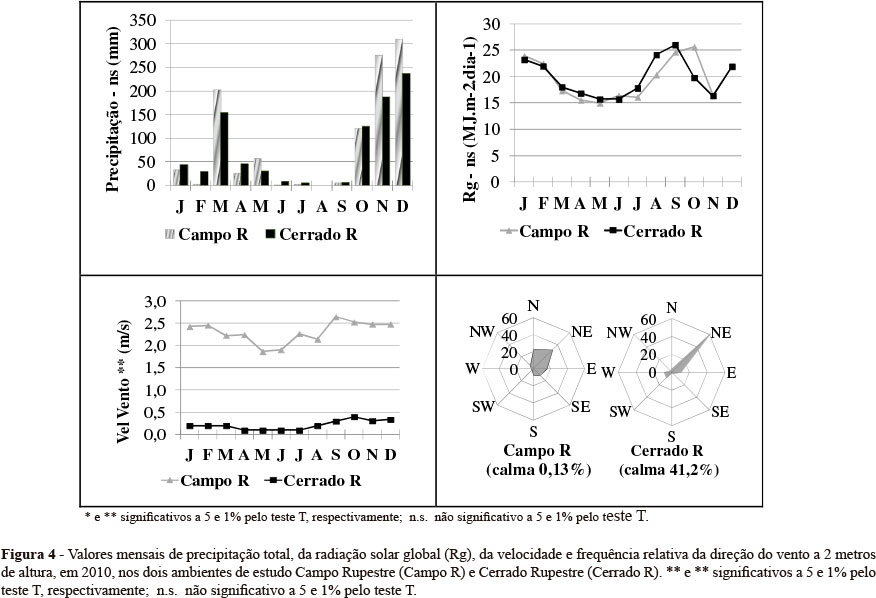The climate and soil have a close relationship with the vegetation of a particular locality. In order to better understand this dynamic environment of the Brazilian Cerrado, this study aimed to evaluate in the region of Diamantina, high valley of Jequitinhonha, Minas Gerais, Brazil, the interaction between climate variables and the physiognomies of the Rupestrian Savannah and the Rupestrian Field environments and also relate the soil characteristics and species composition with the weather conditions. The climate variables used to characterize the Savannah environments were: temperature; relative humidity; actual and saturated vapor pressure; vapor pressure deficit; wind speed and direction; rainfall; incoming solar radiation; and temperature amplitude. For such analysis, data from two weather stations located close to the two environments were used. The Rupestrian Field distinguished from the Rupestrian Savannah mainly because of the higher wind speed, lower maximum relative humidity, lower actual and saturation vapor pressure, lower maximum and average temperature and lower temperature amplitude. The overall effect of climatic variables plus the geologic considerations discussed, in this study, justifies the physiognomy differences found between the Rupestrian Savannah and the Rupestrian Field.
Savannah; Multivariate analysis; Environmental variables





